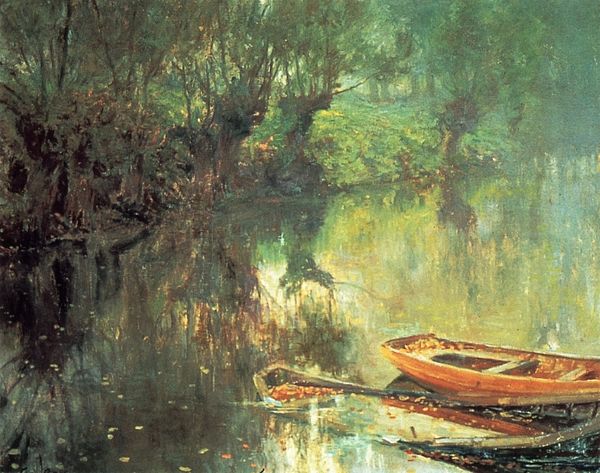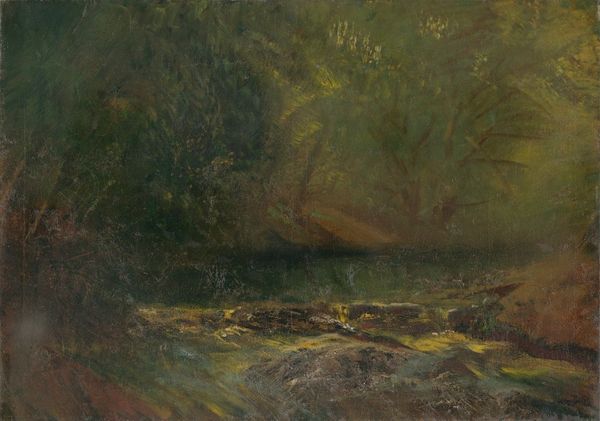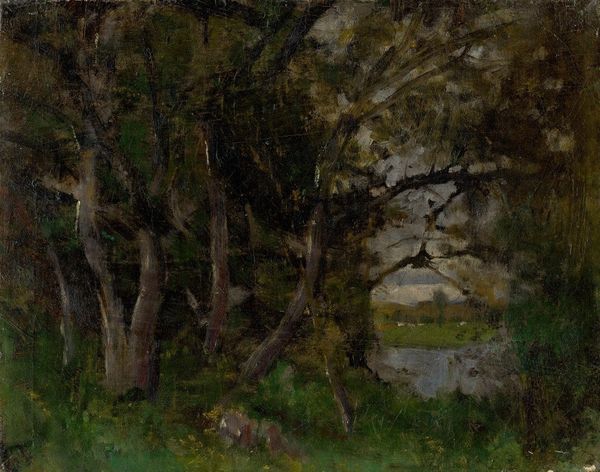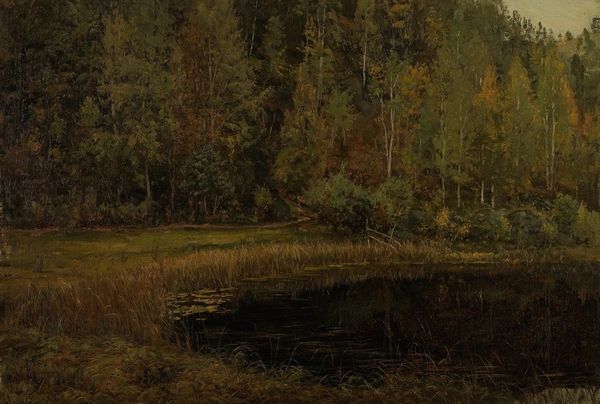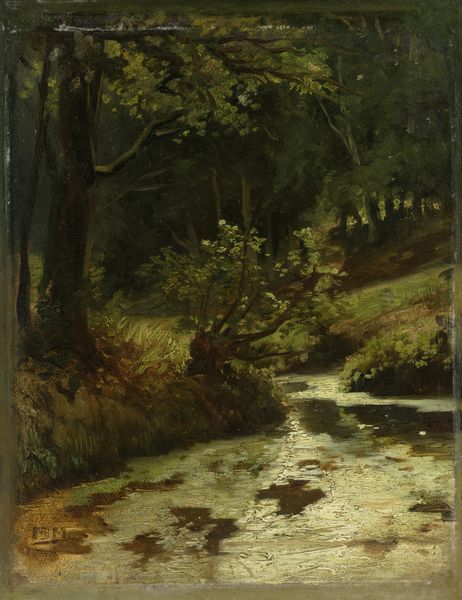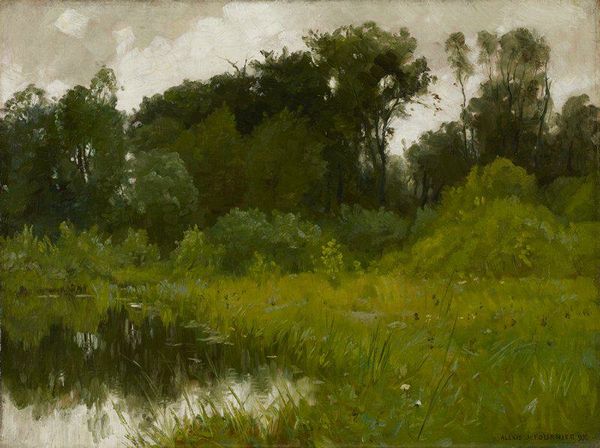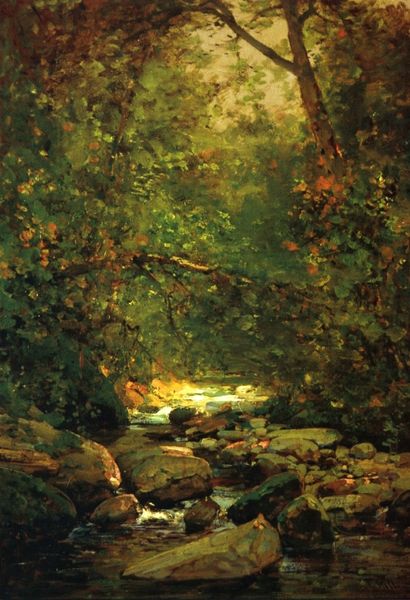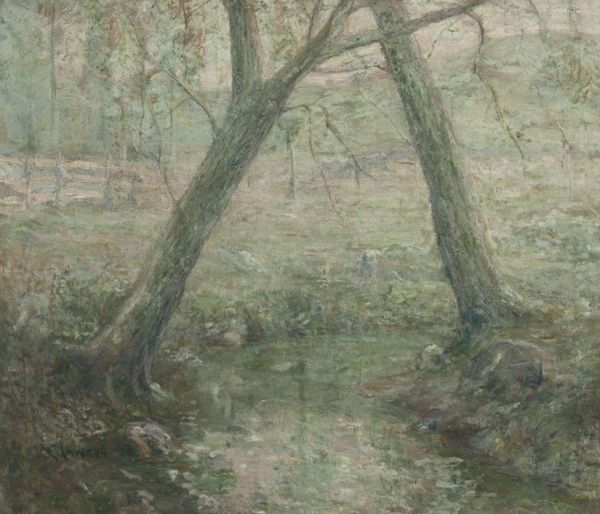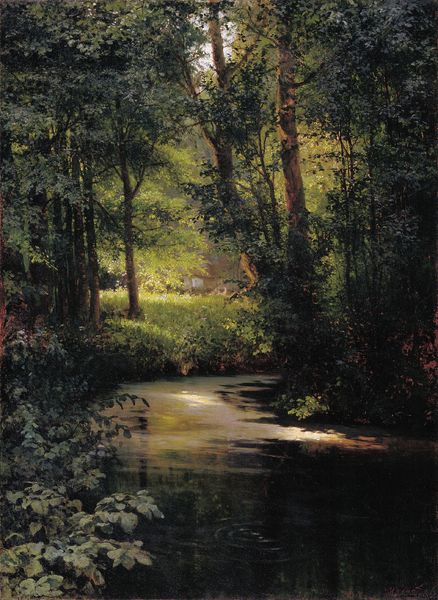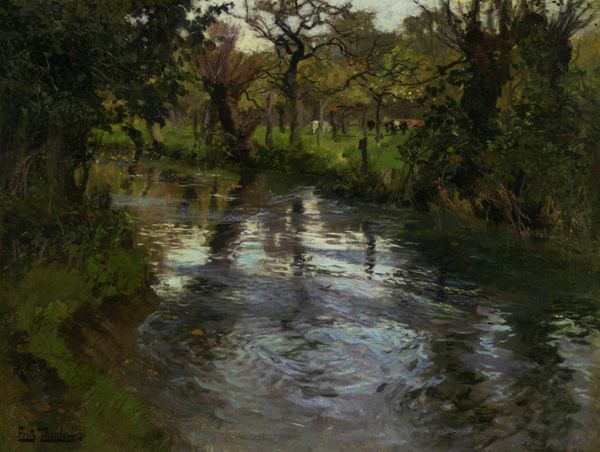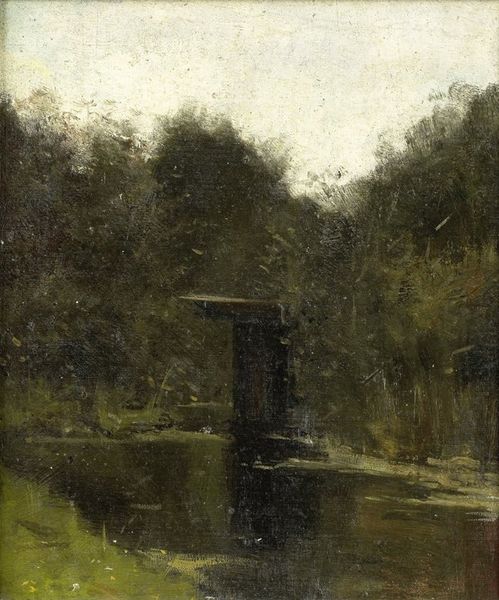
Copyright: Public domain
Curator: This is Vasily Polenov's "Pond," painted in 1879. It's an oil painting and hangs in the Tretyakov Gallery in Moscow. What strikes you about it initially? Editor: It's deeply immersive; a study in contrasts between light and shadow. A wooden footbridge beckons towards some unseen, sunlit space just beyond the dense foliage. A dark mirror reflecting hidden stories. Curator: Polenov painted this en plein air, so this interplay of light wasn't constructed in the studio, but observed directly in nature. That path beyond the footbridge suggests not just sunlight, but a kind of promised haven. Do you sense a tension between the realistic and the romantic? Editor: Absolutely. While Polenov commits to realism through his close attention to nature, there's still this lingering sense of romantic longing, of something just out of reach. Water, in itself, is often symbolic of the unconscious. It is almost an invitation to meditate on reflection and clarity. Curator: The landscape is not merely a backdrop. Rather, it embodies specific political sentiments. Consider the context of late 19th-century Russia: The painting evokes the yearning for peace and natural harmony in a society marked by growing industrialization and social unrest. It serves almost as a collective memory. Editor: So it acts as a kind of idyllic counterpoint? An idealized vision against a more turbulent reality? Do the water lilies hint at the spiritual? It almost takes me back to a pre-modern sense of place, something deeply connected to the soil. Curator: Exactly! These small details become loaded. The lilies, for instance, might suggest purity and tranquility—again, values in contrast to societal strife. His close attention to light emphasizes clarity, like a pathway towards awareness during a clouded era. Editor: Thinking about his choice of scene, it reminds us that even in what appears as quiet contemplation, nature reflects the inner psyche and historical currents that are never far removed. Curator: Indeed. And how artists like Polenov chose to portray their world reveals the era's hopes and anxieties, shaped by very concrete factors in social and political conditions. Editor: And understanding those conditions enriches our connection with the work. It reveals art to be more than an object of beauty, but rather a symbol of cultural memory and identity. Curator: It brings history to life, offering an intriguing view into the landscape and ourselves.
Comments
No comments
Be the first to comment and join the conversation on the ultimate creative platform.

